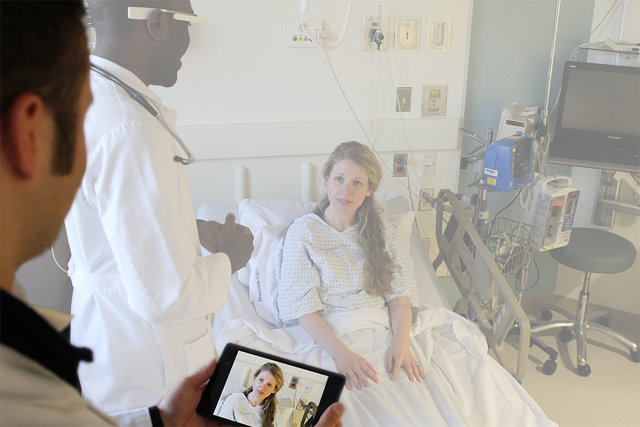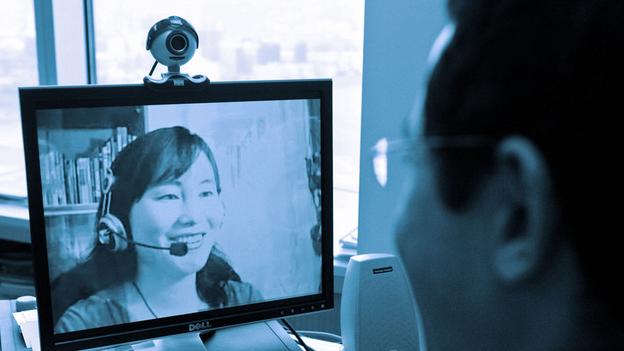
From letters to telegraphs to emails, humans have consistently invented, created and found ways to communicate with each other through the centuries and across many parts of the globe. Modern communication modes like texts, messaging and calls have made it possible for users to reach everyone in a matter of minutes.
However, cloud-based systems like the one offered by the Blue Jeans Network takes the technology one step further by using collaborative video conferencing tools. Blue Jeans offers multiple forms of communication, one that suits different industries, teams and people. Read on to find out more about the many ways video conferencing is connecting everyone, and in the process, changing the world for the better.
Businesses

Skype for Business blurs video calling lines in 2015
With more and more companies adapting and using technologies that make remote work possible, plenty of employees are going after telecommuting opportunities. Between a raise and the chance to work from home several days a week, a growing number of employees are choosing the latter.
This is because telecommute work offers flexible work hours and set-ups. Employees can work from anywhere they choose and often at any time they choose. This flexible arrangement is a boon for many. Want to work out of your couch for days? Sure. Need to spend a few months in another country while your spouse finishes up his PhD or her Master’s? With remote systems, you absolutely can.
In such cases, working from home can mean working from virtually any place in the world. So long as there’s a steady and reliable Internet connection, you can set up your office anywhere. And because systems like the ones offered by many networks are easy to learn, understand and put in place, you won’t have to lose all your hair worrying about installation snafus and troubleshooting problems.
This way, you can live your life the way you want to, enjoy the opportunities that a flexible work arrangement gives you and with video conferencing tools, keep yourself connected with everyone at work. Whether this involves your team or external partners, or even customers, you’re covered.
Classrooms

Reinventing the classroom for the internet generation
Many classrooms are already exploring the idea of long distance learning with video conferencing systems. In many cases, the set-up often involves a classroom full of students with their teacher on video, teaching them another classroom, in another campus, miles away.
In the case of the pilot program launched by Yale, Cornell University along with the Columbia University, it’s a case of reviving programs that are in danger of getting axed. According to people Inside Higher Education, the project had been backed by a two-year grant from the Andrew W. Mellon Foundation—the amount in question being $1.2 million, to be precise.
After a round of budget cuts in 2011 shut down many foreign language programs in the country, language directors at the three universities hit upon the notion of working on a collaborative project, one with the aim to preserve the teaching of rarely taught languages. Senior Associate Dean of Arts and Sciences at Cornell Walter Cohen said: “The ability to sustain languages with very low enrollments, though morally and intellectually desirable, was financially going to be brutal in the short term and dubious in the long term.” He added, “We thought distance learning might be a way of sharing resources.”
To the project, video conferencing is vital. With its video technology, it provides students and educators with the kind of communication channel that brings the sessions on the level of face to face interactions. This builds engagement, allows quick and responsive two-way communication and in many cases, even gives students a chance to solve exercises and perform skits with their offsite classmates.
Hospitals

A Google Glass App For Doctors To Stream Video Of Patients To Consult Other Doctors
In the healthcare sector, video conferencing has given medical professionals and patients a new way to communicate, one that allows for instant and meaningful interactions. According to a Global Services article, the video technology that’s available in the market these days is so good it’s now possible for video conferencing to be used to improve communication between staff and patients.
For instance, at the Greater Midlands Cancer Network or GMCN, teams made up of surgeons, pathologists, radiologists and oncologists meet regularly to make decisions about patient cases and possible treatments. Each case is unique so careful and long deliberations are often held. However, because some of these medical professionals live long distances away from each other, the time it often takes them to get to the meeting is often as long as the meetings themselves.
While this often means that the doctors have less time to spend on patient care, which is a waste of their skills, the bigger issue here is that patients lose out on the medical attention they need.
Video conferencing enabled these specialists to see and share medical case files without having to leave their desk, clinic or hospital office. Given the rapidity of the response possible with video chats, wide-spread adoption of the technology for other hospitals could only mean speedier and better hands-on care for patients.




